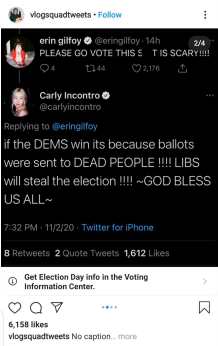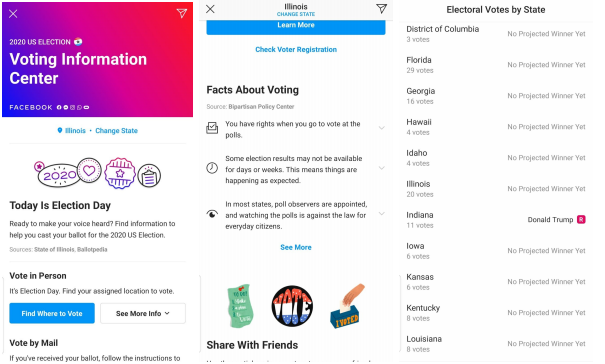Social Media
November 5, 2020
As Election Day ended this Tuesday, many social media platforms attempted to stop misinformation from being spread easily. While some methods appeared to be more effective than others, misinformation was still easily spread.
Many sites did not stop people from posting, but they put warnings if something wasn’t actually true, or included a link to proper information without ever saying if what was posted was wrong. An issue most sites had to fight was candidates declaring victory too early.
Sites like Instagram attempted to stop this by showing people which states had officially been called in their Voting Information Center. Any photo or caption that included words about the election or voting was flagged with a banner. This banner directed the user to the center, and included many different facts.

Instagram still allowed any post, even with misinformation to stay up. In the post shown to the right, there is false information. If someone might miss the small banner and not even realize what they are reading is wrong. It would be much easier for a person to simply believe what they read than put in the effort to go through the Voting Information Center.
Twitter, another popular social media outlet, also made an attempt to halt the spread of misinformation throughout their sites. Twitter adjusted their trending page towards being all about the election or politics. Additionally, they created boxes that gave warnings to users if the post was false or misleading information.
Unfortunately, Twitter still had a plethora of misinformation spread amongst their site. Various posts and videos were spreading all throughout Twitter leading to mass confusion. Twitter did its best to delete the misleading information, but failed to filter out all of the false information.
The attempts weren’t perfect, but many social media sites did more than in 2016. They tried to stop things without being accused of infringing on people’s First Amendment rights. Not only that, most platforms used their prevalence in people’s lives to encourage higher voter turnout, safer regulations and creating a ballot plan.
